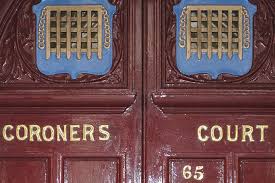Collation of performance-dashboard stats shows department is conducting almost all its transactions digitally, while other departments struggle to reach two thirds
With a digital uptake rate of 98.7%, HMRC pipped the Department for Transport and BEIS to our top spot
Digital uptake data for central government’s most public-facing departments paints a decidedly mixed picture, with some completing practically all their transactions digitally as others conduct less than two thirds of interactions with the public online.
The GOV.UK website has service dashboards for 795 services offered by Whitehall departments, as well as arm’s-length bodies and other national agencies. Among the performance criteria measured for many – although not all – of the services is digital uptake.
Related content
- Interview: GDS leader Kevin Cunnington on ‘self-help groups’, spend controls and cold water swimming
- HMRC promises thorough pilots for digital tax reforms but stops short of delaying launch
- Treasury Committee: ‘Collapse in confidence’ in HMRC’s customs IT system
To assess how well Whitehall is faring in its digital-transformation agenda, PublicTechnology collated quarterly digital uptake stats on nine departments’ five most popular services for which data is available, and thereafter calculated an overall digitisation percentage.
With data unavailable for some services, our findings below are not comprehensive, but hopefully provide an instructive snapshot and shed light on some of the government’s digital successes to date, as well the areas in which it needs to improve service delivery. Each of the nine departments we gathered information on conduct millions, if not billions of transactions with the public each year.
1 HM Revenue and Customs – 98.7% digital
HMRC not only conducts more transactions with UK citizens than any other department – a total of about 2.2 billion a year – but also leads the way when it comes to offering services digitally. By far its most widely used service – stamp duty reserve tax transactions, which total more than 400 million a quarter – is offered entirely online. The same is true of the 34.1 million customs transactions conducted by HMRC each quarter, while 94.9% of the 109 million PAYE transactions it conducts every three months are digital-based.
2 Department for Transport – 95.7% digital
This department completes an annual total of more than 500 million public transactions. Its most popular service – vehicle tax checks by individuals – completes all of its 142 million quarterly interactions online. However, outside of this, it is a somewhat different story. Its two next most popular services have digital uptake rates of 81.8% and 77.3%, respectively, and there is currently no digital option for the 3.12 million vehicle registration certificate changes it transacts per quarter.
3 Department for Business, Energy and Industrial Strategy – 95.2% digital
BEIS completes an annual total of 36.1m transactions, including more than 10 million requests to Land Registry for official copies of records. This, its most frequently used service, has a 99.2% digital uptake rate. Its next most popular offering – Land Registry title register, plan, and document views – is only available as a digital service.
4 Department for Environment, Food and Rural Affairs – 88.9% digital
DEFRA’s cattle tracing system service, which completes 5.32 million transactions per quarter, is a digital star, with a 94.5% uptake rate. Its pig movement report services, which digitally conducts 95.5% of its almost-200,000 transactions per year, is another leader. But, with a digitisation rate of just 53.4% for its 758,000 transactions per quarter, the department’s service for applying for a fishing-rod licence is something of a laggard.
5 Department for Work and Pensions – 79.8% digital
Data for this department was a little sketchy, with digital uptake stats for some of its more popular services not available or relevant. But one of its most widely used, the application process for Jobseeker’s Allowance, managed a digitisation rate of 82.7% for the near-250,000 transactions it conducts each quarter. The digital uptake rates for the rest of its top five services were, respectively, 74%, 94.3%, 96.9%, and 100%.
6 The Home Office – 79.6% digital
This department’s enhanced criminal records checks, some 1.01 million of which are conducted each quarter, are offered 76.9% digitally. Ordering a copy of a birth, marriage or death certificate, a service that is used 345,000 times every three months, has an even better digitisation rate: 87%. But the process for correcting the register of births, marriages, and deaths is currently not available digitally at all.
7 Department of Health – 75.2%
DoH’s most popular service – NHS e-Referrals – is, as the name suggests, entirely digital. But registering as an organ donor or updating your details, the next two most widely used services, have digital uptake rates of just 52.6% and 41.8%.
8 Department for Education – 67.6% digital
Despite its lowly position in our league table, three of this department’s top five services are offered purely digitally. But elsewhere, its most popular service for which data is available – applications for full-time study support – has a digitisation rate of 73.3%, while the student loans voluntary repayments service digitally conducts just 20.7% of its 145,000 transactions each quarter.
9 The Ministry of Justice – 65.8% digital
With well over one million transactions a year, the prison visit bookings service is by far this department’s most popular. Its current digital uptake rate is just 50.5%. Other services – such as the legal aid acts of assistance for lower claims service, which has more than 250,000 transactions per quarter – are almost entirely digital. But barely a quarter of the near-500,000 lasting power-of-attorney registrations made each year are conducted digitally.



